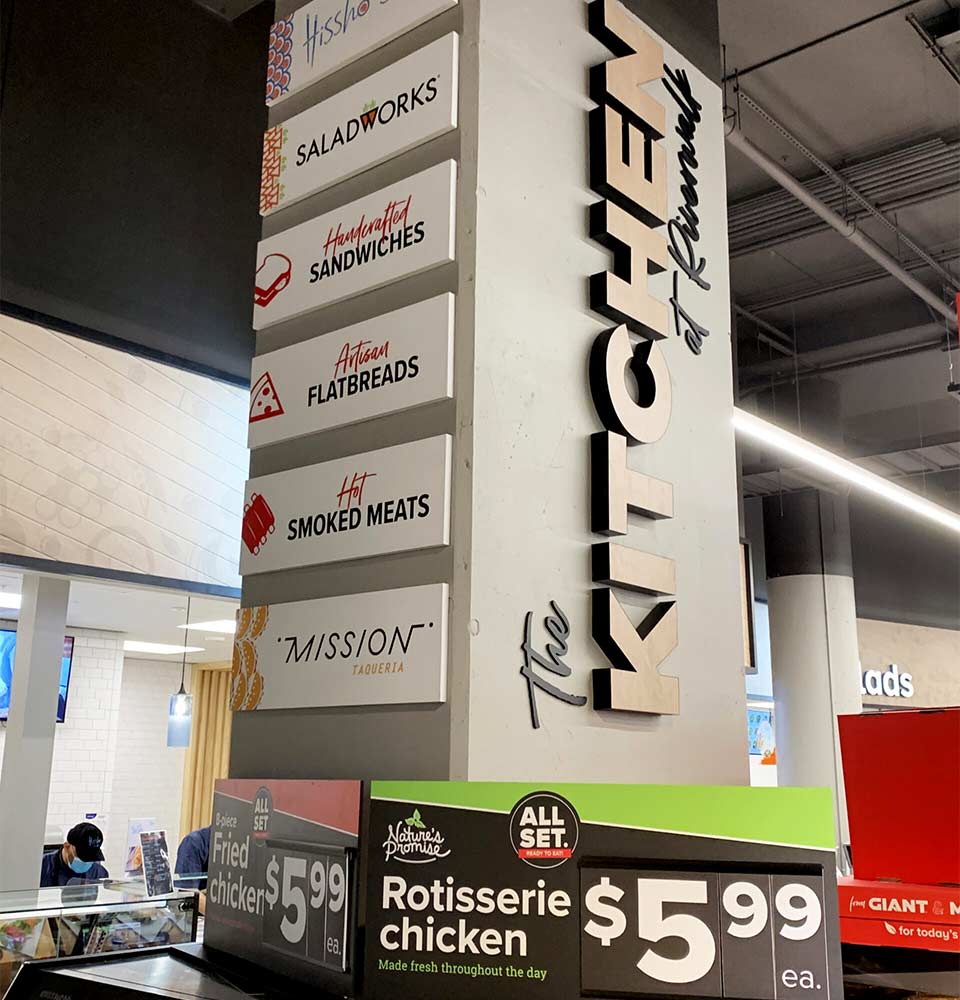The Best Materials for Indoor Signage

When it comes to building indoor signs, you have a lot of options! Many businesses question which sign process is best for their custom logo or interior signage, in addition to materials. The answer is really dependent on the type of business and brand image they’re trying to convey.
Here’s a breakdown of the six best materials for indoor signage:
- Acrylic Signs
- Vinyl Signs
- Foam Letters and Boards
- Metal and Glass
- Wood Signs
- 3D Signage
Acrylic Signs
Used for both indoor and outdoor displays, acrylic signs are best used as office signage for lobbies and reception areas. This is due to their transparency and plastic material. It might not be the cheapest sign material available, but it is durable and attractive for highlighting special promotions, events, company goals and any other important information.
Vinyl Signs
The popularity of vinyl signs comes from the fact that they are durable, lightweight and versatile enough to work across many different applications. These signs can be used for interior or exterior use and can be made available in a thick film format, or thin film format. The best part about them is that they will last you longer than most other sign types.
Self-adhesive vinyl in particular has many uses in the graphic design and signage industry, providing flexibility with your design, durability for the indoors and strong visual marketing. It’s great for window graphics and improving the visual appearance of your brand.
An additional vinyl material that works for indoor purposes is foam-backed pvc vinyl, which can use a wider variety of materials such as bulletins or posters. This is because foam-backed vinyl presses easier and has less issues with adhesion when working with additional materials.
Foam Letters and Boards
Foam letters and boards, or foamcore, is made with a plastic called “polystyrene,” making them lightweight, easy to store, and very inexpensive. When paired with colorful letters, you can create eye-catching and informative displays that work great for just about any type of business.
The matte surface will not reflect light, which can help to focus attention on your message or promotions. However, foam signage should only be used temporarily, as they will damage easily in a short amount of time.
Metal and Glass
Metal and glass signs work together to influence a consumer’s decision-making process due to their clean and finished look. Whether it be through direct printing or upgrading the current glass, glass signs can be completely customized. Glass is comparable to acrylic in that it can be used as an aesthetic technique to reinforce the interior.
Meanwhile, metal is a type of rigid and strong material that can be polished. The combo makes for a durable material that lasts a few years.
Wood Signs
Wood has been used as a signage material for years and continues to be prominent today. Wood is the most convenient material to use because it can be cut into any shape and finished in a variety of ways to fit a brand’s appearance. When you’re looking for a natural feel, wood is perfect for indoor use.
3D Signage
Adding three-dimensional signs are beneficial to your brand, with its visual appeal drawing in customers. It doesn’t matter if you decide to use a custom-made metal sign, a wood sign or an acrylic sign – using 3D letters will add character to your business and make you stand out among other establishments in your area.
Choosing the Right Signage Material
In the end, signage is your way of differentiating yourself and business. It presents your company, product or service to the world, and because every brand is different, there is no “number 1” option. Everything depends on the intention and budget of your business – which is why custom signage matters. You’ll need to assess how long the sign will be in use, where it’ll be used, and its purpose.
We recommend you start with a basic material to see your options (and what is right for you). If you’re working within a budget, measure the longevity and potential maintenance costs of the signs, and how they fit into your marketing strategy.
By working with Identity Group, we’ll help you display the signs that best fit your company’s image and aesthetic. Before you know it, you’ll be on your way to creating memorable custom signs!
